Why Does My Bike Seat Keeps Tilting | 7 Steps Easy Steps to Fix It
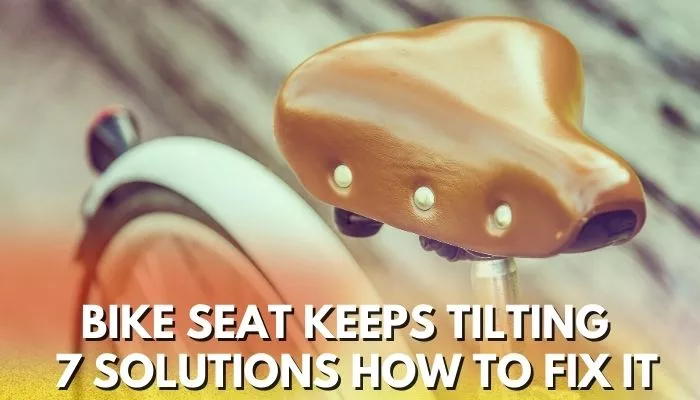
The sole objective of the seat on your bike is to assist your butt while you ride. The seat can fulfill this important task very effortlessly, considering how important it is. Just make sure it doesn’t move from the position you assigned it.
Table of Contents
Short Answer
It can be due to many reasons. For instance, the bike seat has worn out or damaged, the seat clamp is loosened, or the seat post has not been adjusted lately.
To achieve the perfect riding position, proper bike seat adjustment front to back is crucial. Shifting your seat forward or backward can significantly impact your comfort and pedaling efficiency.
However, why does my bike seat keeps tilting? Every movement but staying put is made by it as it tilts, glides forward or backward, fluctuates in height, and moves from left to right. What could be the reason why it’s doing that, and how will you repair it?
The majority of these problems, fortunately, just call for easy and straightforward workarounds. In order for you to return to riding without being anxious about your seat slipping out from beneath you, let’s first identify the origin of the issue and then discuss how to solve it.
Why Does My Bike Seat Keeps Tilting

The Seat post is most likely not adjusted properly, which is the most common explanation for your bike seat tilting continuously. The component of the frame to which the seat is connected is called the Seat post. The body’s weight will force the seat to slant if it is not secured securely enough. The saddle itself may be distorted or damaged, as another explanation. This can happen when the saddle becomes wet and dries out inappropriately or if you crash.
If you’re a biker like the majority of them, you’ve undoubtedly experienced your fair share of annoying events involving a bike seat that won’t stay flat. One of the best things is that your problem of tilting bike seat can be solved in a variety of ways. It could be caused by a variety of different factors. The seat post needs to be more adequately tightened is a common cause of a bike seat that persists in tilting.
By making sure the seat post is fully tightened, this problem is readily rectified. The saddle’s lack of levelness is another frequent cause. The bolts holding the seat in place can be loosened or tightened to adjust this.
How Can A Tilted Bike Seat Be Fixed?
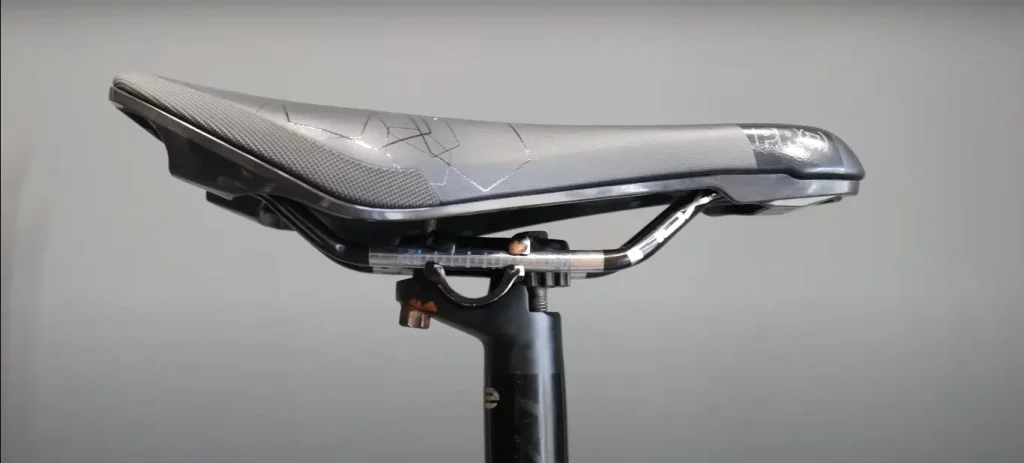
It might be uncomfortable to ride with your bike seat inclined. It’s not only irritating, but it can also affect your stability and make biking harder. A slanted bike seat can be adjusted in a few simple ways, which is lovely.
Make sure the bolt that secures the seat in place is tight. Simply use an Allen key or wrench to tighten it back up if it’s slack. Try changing the saddle’s position if the screw is firm, but the seat still is tipped. A simple forward or backward slide can sometimes be all necessary to level anything.
Check the post to which the seat is fastened if neither one of those two solves the issue. It’s conceivable that the frame has gotten distorted, which would force the seat to tilt.
You can generally straighten out a crooked post with a hammer or pair of pliers. After making sure everything is in order and your bike seat is still not staying level, you might need to change the entire seat assembly. In most cases, this is not essential. However, it can be your best choice if nothing else appears to be working.
Why Does the Seat on My Bike Keep Tilting Forward?
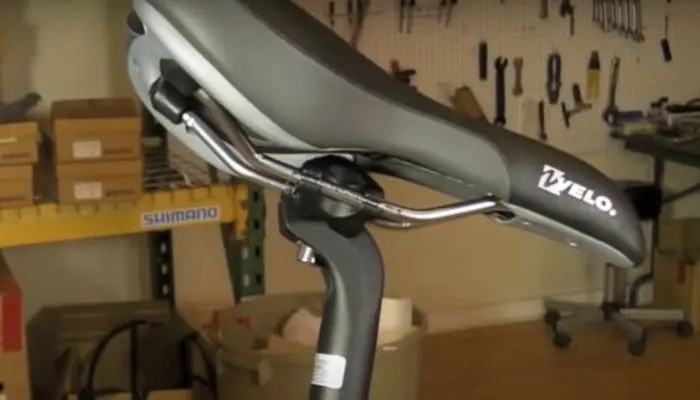
You’re not the only one who has ever questioned why the seat on your bike keeps leaning forward. It is a frequent problem with a variety of potential causes. The seat post not being adequately put into the framework is one of the most prevalent causes of the forward tilt of a bike seat.
The seat may gradually tilt forward as a consequence of the seat slipping down. Simply check to see if your seat post is placed all the way in the framework before locking it down to fix this. An inadequate seat angle is another element that might cause a bike seat to tilt forward.
Your seat will lean forward if your seat is too much forward so that the front of your seat will carry more weight. In order to correct this, tilt your seat back slightly or even it out.
Last but not least, if the user continuously shifts their weight while riding, a bike seat may lean forward or move side to side. The seat may get loose as a result and may even gradually tilt and slip down. If you’ve experienced frustration when the bike seat moves side to side or tilts forward, it’s high time to correct this. Attempt to maintain a single position when riding and avoid movement.
Why does the seat on my bike keep slipping?
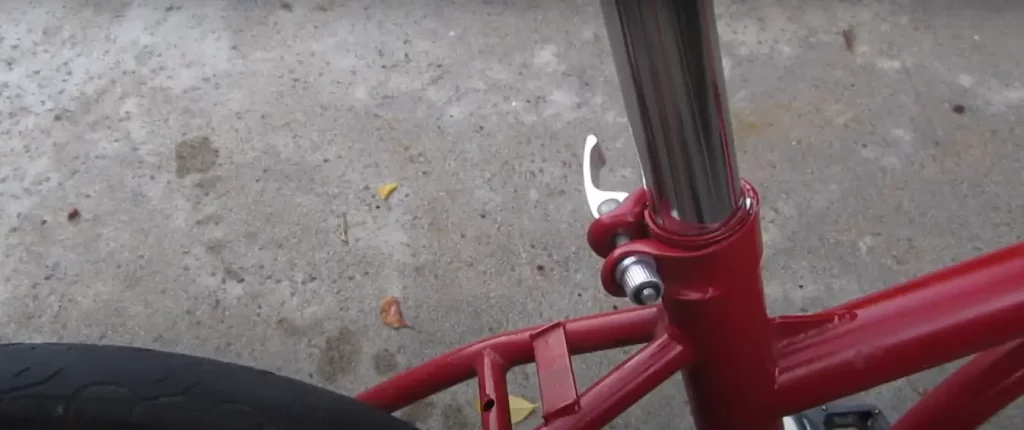
You understand how frustrating it might be if you’ve ever been riding a bike and discovered that your seat is starting to slip. There are several potential explanations for why this could occur, but luckily, there are a couple of simple fixes as well.
The bolts holding your seat in place may be loose, which is one of the factors of your bike seat moving down. Make careful to check these frequently and tighten them if required. The clamp that secures the seat rails may not be tight enough, which is another potential cause of slipping. With the assistance of an Allen key and screwdriver, you may tighten this bolt, which is usually located behind the saddle’s nose.
If none of these fixes works, it’s likely that your seat rails are too broad for the bike’s clamp. You will need to purchase new rails that fit perfectly in this situation. Alternatively, if you own an outdated bike with wider rails, you can cut the rails’ sides down to make them suit the clamp. Whatever the reason for your seat slipping, a simple solution is most likely available. Thus, don’t let it hinder you from having a bit of fun on your rides!
A Wobbly Bike Seat: How Can You Repair It?

Several reasons can cause your bike seat to be unstable. The seat post clamp should be examined at the start because it might have fallen free. In the event that the clamp is well secured, yet the seat still sways, the seat is most likely at fault.
Either a loose bolt or a problem with the rails is to blame for this (the metal bars that secure the seat to the framework). Start by examining the seat post clamp, which holds your seat in place. If it has come loose, it might be the primary reason for the bike seat moving up and down. Secure the clamp by using an Allen key to ensure it is properly tightened.
Once they are loosened, you must be able to move the rails until they are flat with the frame and level. Prior to hopping back on your bike, tighten up all the bolts once again. It’s probably time to replace the entire seat if altering the seat post clamp and Rails doesn’t resolve your unstable seat problem.
In particular, this is applicable if your seat is ancient or has witnessed better days. Comfort and stability should both be regarded when choosing a new saddle. Selecting a seat wider than your sit bones is a solid general rule of thumb (the bony features on either side of your tailbone).
What Causes My Bike Seat to Always Tilt Back?

If your bike seat tilts back repeatedly, there are a few possible causes. Make sure the seat of the bike is firmly attached to the frame as a starting point. When you sit down on a loose seat, it will automatically tilt back. Second, observe the angle at which your seat is positioned. When you sit on it, it will tilt backward if it is positioned too far forward.
Lastly, take a moment to check whether your seat is level. If it’s not, it can be the root cause of why your bike seat keeps tilting back. If the seat is not leveled, it will tilt in the direction that has a higher elevation. You can solve the issue and prevent your bike seat from leaning back by using these simple suggestions!
How to Tighten the Bike Seat Clamp
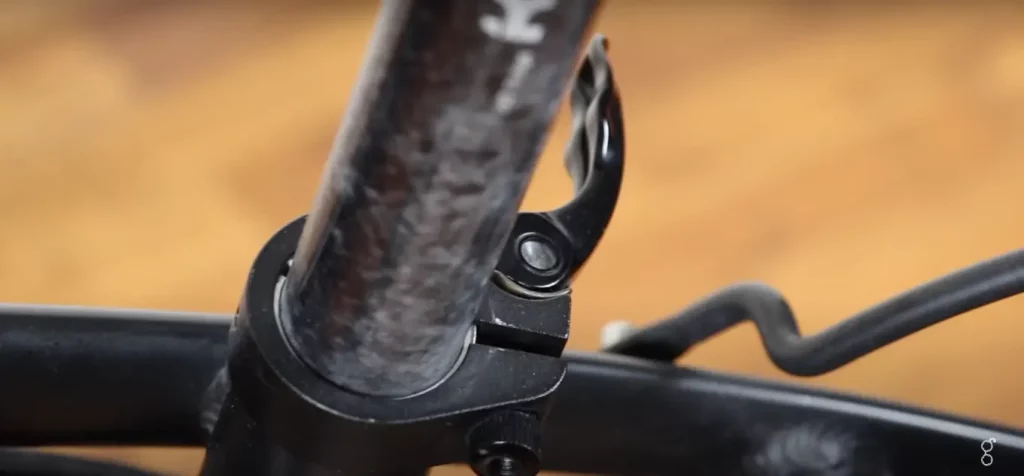
Over time, bike seats can loosen, which can make for a rough and unsafe ride. When you encounter issues with your bike seat becoming loose, understanding how to tighten the bike seat clamp can be a life savior. Fortunately, adjusting the seat clamp is a simple solution to this problem. How to do it is as follows:
To begin with, locate the seat post collar. The Seatpost is kept in place by this ring, which encircles it. A little above the collar is often where the seat clamp is positioned. The fasteners holding the seat clamp in position should then be loosened. An Allen key or wrench will be necessary for this. You ought to be able to move the seat clamp upward and downward the seat post after the bolts have been unfastened.
It’s time to ratchet up the seat clamp right now. Start by setting it up such that there is approximately 1/2 inch of space between both the top of the seat and the bottom of the clamp. After that, equally, tighten each screw until it is tight. Make sure they are secure enough so that there is no possibility of them falling free while bike riding, but don’t overtighten. That concludes the matter! Now your bike seat would be firmly in position.
- For Tilting a Cycle Seat, Use Friction Paste
When you’re wondering how to fix a bike seat that keeps tilting, consider the use of friction paste as a practical solution. Friction paste has been used effectively in a few cases to correct a seat that is continuously sliding. In a nutshell, friction paste is made up of tiny glass shards contained in a gel. These little particles aid in creating friction between two connecting parts. According to the concept, better friction and decreased slippage can be accomplished without using as much power.
- Wobbly seats are avoided by regular maintenance.
- Try repeating that quickly a few times. Every now and then:
- The seat post should be removed from the frame.
- With a cloth, remove any residual grease.
- In order to remove the grease from the seat tube, slide the fabric into the frame.
- Apply a thin layer of new grease with a brush to the exterior of the seat post and the interior of the seat tube.
Perhaps, this will assist you in fixing your loosened bike seat.
FAQs:
Is it necessary to incline my bike seat?
More riders than most appreciate the importance of the proper seat angle. A wrong seat angle, for instance, is often (though not consistently) the reason for lower back pains, which are a typical problem for riders. Between 0 degrees (horizontal) as well as 4 degrees nose down is the optimal range for the saddle’s angle.
How can you tell if your seat is too far forward?
Your upper body may be utilizing itself excessively if your seat is too far forward, which could lead to tension in your shoulders, forearms, and hands, in addition to stiffness in those areas. Although you’ll be able to ride at a quicker pace, you’ll probably lean back on your seat during hills.
Which position is ideal for a bike seat?
If the crank arm is at three o’clock, it is ideal to have your knee exactly above the pedal spindle (referred to as the Knee over Pedal Spindle, or KOPS, principle).
Does a larger bike seat provide more comfort?
For lengthy rides or unhurried riders where excess weight from more substances isn’t an issue, wider seats are preferable because they seem to be more comfortable. During short efforts, especially racing, where comfort isn’t entirely forgone but is sacrificed in consideration of other factors, thinner seats tend to be better.
Conclusion:
Now you have the answer to the question saying why my bike seat keeps tilting. Checking the bolts is the first thing you should do to fix a bike seat that is constantly weaving. Verify that nothing has been stripped and that everything is clean.
If you clean the bolt, don’t forget to lubricate it afterward. Parts can be made less mobile by using friction paste or parts from an old inner pipe can. Consider calling the manufacturer if the details are brand-new. Bike parts having manufacturing flaws is not unheard of. Also, the component might still be guaranteed under warranty, sparing you some cash.
